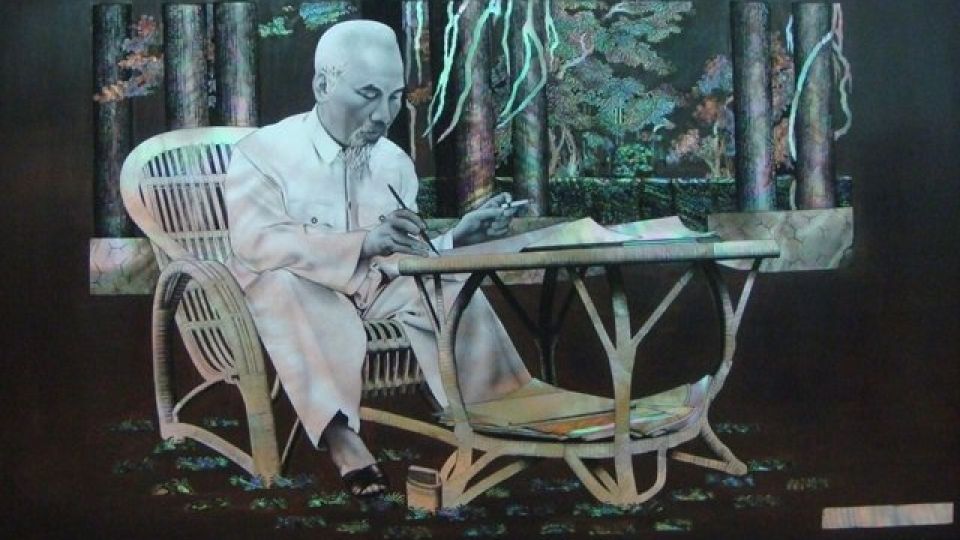HANOI (ANN/VIETNAM NEWS) – On the banks of the Nhue River, within the rural outskirts of Ha Noi’s Phu Xuyen district, lies the ancient Chuôn Ngọ Village, celebrated for its millennia-old tradition of mother-of-pearl inlay.
The historical records of the village indicate that the art of mother-of-pearl inlay has been practised here since the Ly Dynasty (11th to 13th century). Truong Cong Thanh, a scholar and army general in the royal court, is credited with founding the craft and imparting his knowledge to the villagers.
Mother-of-pearl inlay involves the meticulous insertion of mother-of-pearl pieces into wooden objects. The craft demands precision, requiring exact matching of the wood carving and the shaping of the inlay to be seamlessly integrated.
The hallmark of mother-of-pearl products lies in their enduring quality over time, characterised by intricate details and sophisticated craftsmanship, rendering them treasures of traditional art.
With a history spanning over a millennium, Chuon Ngo’s mother-of-pearl products have earned recognition in both domestic and international markets, a testament to their resilience through the highs and lows of time.
To create a mother-of-pearl inlay product, artisans have to go through various working stages, which require a high level of patience, care, and attention to detail.
From the drawing design, they select suitable pieces of clam, oyster, other seashells and then cut them into desired shapes. For a single inlay item, hundreds or thousands of mother-of-pearl pieces may be required.
According to Vu Van Hung, owner of Hung Tam workshop in Chuon Ngo, carving the surface of a wood object and cutting mother-of-pearl from seashells as inlay material is the most challenging step in the process.
“Meanwhile, in the lacquerware technique, the artisans put pieces of mother-of-pearl layer on top of the wood surface, and then cover it with a layer of lacquer paint,” Hung said.
“Compared to inlaid scenery or natural animals in domestic utensils, conveying the charisma of a person to emanate from the inlay portrait is challenging and requires a talent.”
The artisans then use steel knives to carve out the small patterns and trim lines with black powder to highlight the details.
Finally, the wooden object is ground and polished to make the raised patterns come to life.
Due to the level of complexity and details, some products take a considerable amount of time to finish.

“A painting with complex details may require months or more to be crafted,” said Nguyen Thi Tam, Hung’s wife, who is also a craftswoman at the workshop.
Chuon Ngo workers’ craftsmanship has evolved with constant improvement over many generations.
Mother-of-pearl inlay products by Chuôn Ngọ artisans are not limited to furniture and paintings with traditional scenes. Photorealistic portraits on mother-of-pearl inlay products have created a brand of excellence in the village.
“To create freshness in craft products, many workshops in Chuon Ngo create mother-of-pearl inlay portraits of renowned figures. In particular, the mother-of-pearl portraits of President Ho Chí Minh are warmly received by domestic and international customers,” said artisan Nguyen Dình Hai.
The most challenging technique, regarded as the pinnacle of mother-of-pearl inlay – carving with black powder to highlight the facial expression of a person – necessitates the craftsman to be an artist as well.
Besides mastering the inlay technique, craftsmen also cultivate knowledge of photorealism to transform inanimate materials into lively portraits.
Nguyen Van Lang is one of the masters of photorealistic portraits in Chuon Ngo.
“Compared to inlaid scenery or natural animals in domestic utensils, conveying the charisma of a person to emanate from the inlay portrait is challenging and requires a talent,” Lang said. “Artisans use a specialised knife to cut the mother-of-pearl inlay material, just like the brush painters use to draw.”
Lăng is the author of the mother-of-pearl inlay painting that General Secretary of the Communist Party of Vietnam Nguyen Phu Trong presented to his Chinese counterpart, Xi Jinping, during the latter’s state visit to Vietnam in December.
The painting portrayed the two leaders enjoying a tea party in Beijing during Trọng’s visit to China last year.
The artwork took him six months to finish, and inlaying the photorealistic portrait of the two leaders alone took up to a month.
“I worked meticulously to create this work of art so that our friendly nation could witness the essence of mother-of-pearl inlay craftsmanship and the excellence of Vietnamese artisans,” Lang told Vietnam News.
“My hometown is where the mother-of-pearl inlay craft in Vietnam originated. No matter where you go, Chuon Ngo Village is home to the most innovative and sophisticated craft. It is sacred,” Lang added.


